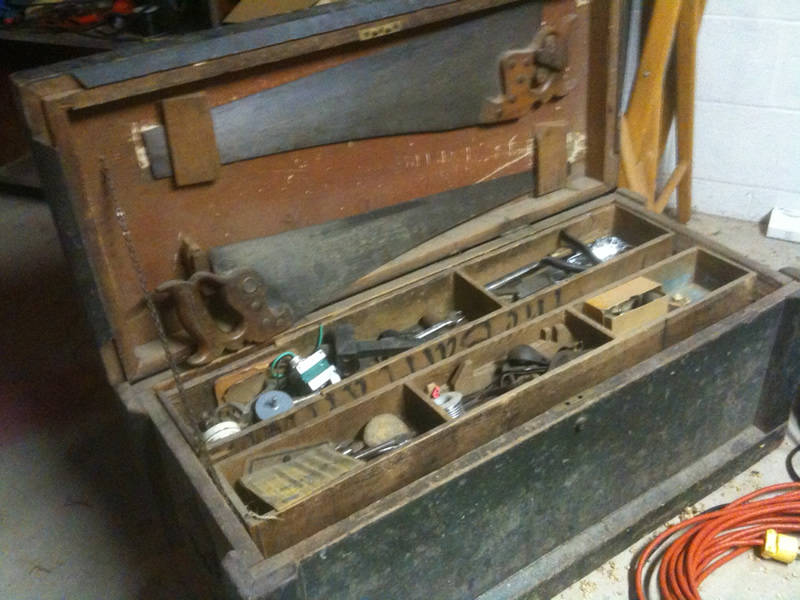How to look at a tool
 My husband inherited his great grandfather’s wooden tool chest from pre-1900, filled with beautiful hand tools. The wooden surfaces of the brace and bit shine from hours of rubbing against carpenter’s palms as he built shelves and homes for doctors, businesses, and scores of names. Each of the jobs is carefully penciled into small notebooks tucked into the tool chest tray, seasoned with sawdust. When we pull out a tool, we never say, “It does this.” Instead, we imagine the places it has built, feel how it fits in our hands, and assume it can do anything we are brave enough to envision.
My husband inherited his great grandfather’s wooden tool chest from pre-1900, filled with beautiful hand tools. The wooden surfaces of the brace and bit shine from hours of rubbing against carpenter’s palms as he built shelves and homes for doctors, businesses, and scores of names. Each of the jobs is carefully penciled into small notebooks tucked into the tool chest tray, seasoned with sawdust. When we pull out a tool, we never say, “It does this.” Instead, we imagine the places it has built, feel how it fits in our hands, and assume it can do anything we are brave enough to envision.
When I see a new tool on the web, even one so simple and “old fashioned” that it lingers from a previous millenium, I do not label its place or task. I wonder about it just as I do the tools in that chest. Somehow, I always come up with more ideas than it offers for itself. Last week I looked at a review of Box Templates. This simple site offers printable patterns for folded boxes. Like a brace and bit, it has obvious uses. But what if… they could be templates for mystery boxes that students make about themselves as a “getting to know you” activity the first week of school? The outside could be decorated with words or images of significance to the student, the inside filled with small objects or symbols or slips of paper with favorite quotes or song lyrics or… What if we challenged students to make their own box templates for other box shapes? What if we invited students to create a 3D container representing a concept we are studying: government by the people or cells or energy or biodiversity? Some might even render it virtually in SketchUp. Others will need to touch it and crease the folds with their fingernails.
Box Templates is my brace and bit this week. The palms that smooth this brace and bit each bring new materials and new products. This tool does what? Anything.
As today’s budgets make us ponder each available tool a little longer, we can enjoy the smell of sawdust and inscribe a few notes in our own idea notebooks. It’s just a matter of vision.






